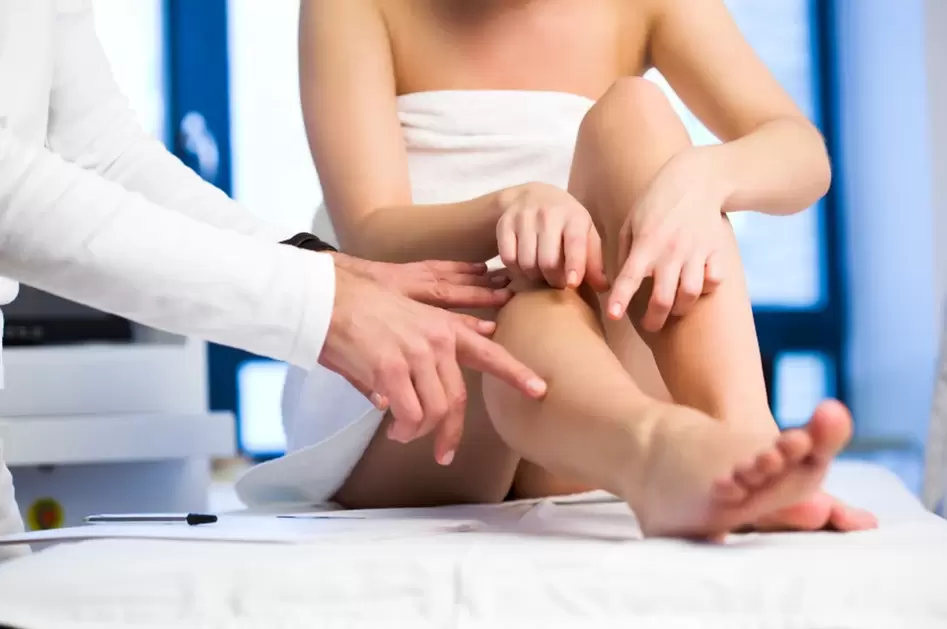Varicose veins are an extremely unpleasant disease for the fair sex, both physically and aesthetically. Signs of varicose veins of the legs in women can appear from a young age, but most often the elderly have a similar problem.
Varicose veins can appear for many reasons. There are categories of people who belong to a particular risk group. This should include those who spend a lot of time on their feet or, conversely, lead a sedentary lifestyle. In addition, varicose veins are an inherited condition. If the father or mother had a similar pathology, then it can easily be transmitted to children.
In a neglected state, varicose veins look very ugly. Veins swell, eggs turn blue and with many vascular nodes. But appearance is not the worst, because varicose veins are the cause of the development of many complications related to blood circulation. All of this suggests that the problem needs to be resolved. It is advisable to do this at an early stage in the development of the disease, but for this you need to know what the initial stage of the manifestation of varicose veins looks like.
The first signs of varicose veins
At an early stage, varicose veins are very difficult to diagnose, so most often patients (since women are more prone to the disease) turn to a specialist at a relatively late stage. Sometimes it takes a lot of time to get your legs back in order. Often times it is incomplete without surgery.
To prevent such a development of events, it is necessary to consult a doctor when the first signs of varicose veins appear. Better yet, take regular prophylaxis, lead a healthy, moderately active lifestyle, and give up bad habits.

A woman can suspect varicose veins according to certain signs, in the initial stage there is periodic swelling of both limbs, severe fatigue even with a light load on the legs and a kind of buzzing. All this suggests that a woman needs to at least think about the prevention of varicose veins, and even better, consult a doctor.
Most often, the first signs of varicose veins appear at a time when a woman's weight is beginning to change. This could be due to hormonal imbalance or pregnancy. As a result, the load on the legs will become too great, and the ships may not be able to withstand.
Everything is initially accompanied by a feeling of severe tiredness in the legs. This is particularly pronounced when walking for a long time or when wearing uncomfortable shoes. If work is associated with a long time on the feet, then in the evening the sensations will become uncomfortable. But even those who sit a lot can show varicose veins. It can develop due to circulatory disorders and poor posture. Women who like to sit cross-legged are particularly at risk.
Sometimes the first signs of varicose veins are similar to other conditions, so even specialists cannot always pinpoint the real cause of the problem. The symptoms of varicose veins can be similar to flat feet and lumbar osteochondrosis. In order to understand that they are really varicose veins, it is necessary to carry out a lot of diagnostic procedures to examine the condition of the vessels.
When the first signs of varicose veins appear, women are not always in a hurry to see a doctor. Many try to solve the problem on their own, but this approach does not always produce good results.
If you notice swollen veins, swelling and discomfort at the end of each work day, you should see a doctor and get examined.
The fair sex should be especially careful when they are at risk. This applies to pregnant women, overweight people and problems with obesity. Anyone who spends a lot of time on their feet, wears uncomfortable shoes, stockings or socks with hard rubber bands and also has congenital pathologies of the connective tissue structure is at risk from varicose veins.
All of these can lead to a violation of the drainage and blood flow to the limbs. The result is varicose veins. People at risk should consult a doctor immediately at the first suspicious symptoms.
Symptoms of varicose veins at different stages
In total, doctors divide varicose veins into 4 main stages. As a rule, at the first stage, a person is not bothered by the unpleasant symptoms of varicose veins. The pain can be mild and sometimes it does not occur at all. Here you need to focus on the appearance of the vascular network and periodic swelling.
The second stage is characterized by a constant feeling of heaviness in the legs. At the end of the day, the limbs simply burst, swell, and sometimes even convulsions occur.
The third stage is already expressed more in cosmetic terms. The swelling of the legs will be almost constant, the skin will begin to thicken, and ugly age spots may appear. Even a little bit of time on your feet means that the pain becomes very severe.
The fourth stage is the most serious. In this case, drug treatment will no longer help and surgery will have to be performed. Ulcers develop on the legs or where the veins are particularly swollen. In addition, there is a violation of tissue trophism.
Remember that you need to start acting as early as possible. At the first signs of varicose veins, you need to consult a doctor and undergo appropriate diagnostics. The most commonly used venography and ultrasound examination. The specialist can then prescribe the appropriate treatment.

























